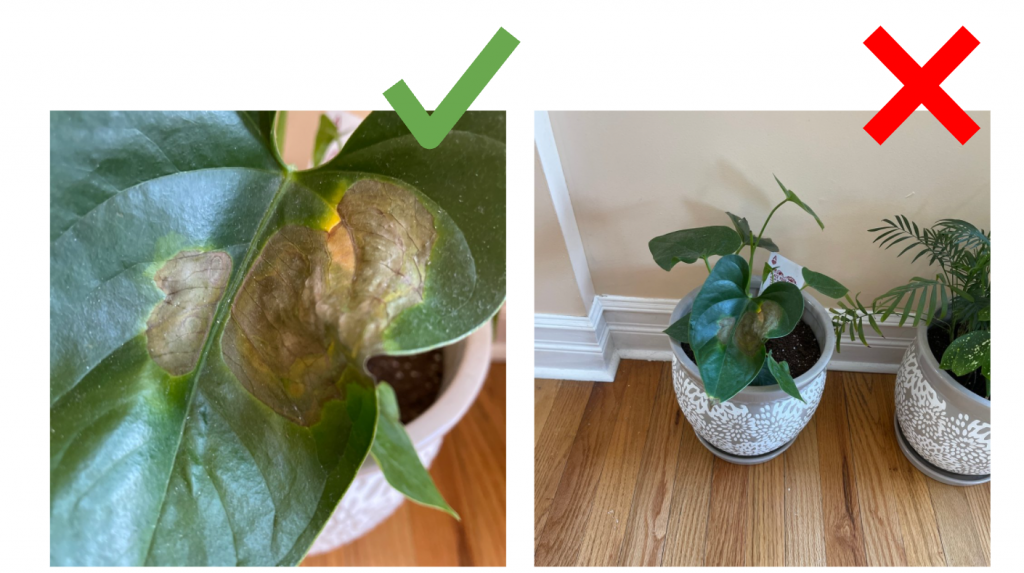Are you wondering how to get the best results in Plant.id Health Assessment? Here are 5 tips that will make using the feature better and easier for you!
- Include details of the sick parts of the plant.
- Include multiple photos in the request.
- Include photos of the different parts of the plant.
- Interpretation of the result.
- Your disease might not be on the list of the diseases we can identify. Contact us if you are unhappy with the result.
⚠️ The Plant.id Health Assessment is in beta version. These suggestions might change as we improve the model.
1. Include details of the sick parts of the plant.
It’s all about the details.
- Sick parts should be clearly visible. There should be a detail of the sick part on at least one of the pictures you are sending.

2. Include multiple photos in the request.
More is (almost) always better.
- Include multiple photos of the sick part of the plant. This will likely lead to better disease prediction.
- If you want to improve the results of plant species recognition as well, include a picture of the whole plant.
- The order of the photos doesn’t matter.
3. Include photos of the different parts of the plant.
Leaf or stem? Both!
- Include different parts of the plant.
- Sending photos of different parts showing different symptoms might improve the result because they can be associated with the same disease. For example, a fungal disease might be visible at the stem of the plant, on the leaves, and also might lead to systematic changes in plant morphology (such as wilting).
- It is important to note here, that different symptoms might also mean that a plant suffers from more diseases and can lead to different diagnoses.
4. Interpretation of the result.
These are the diseases you are looking for.
- The diseases are structured in a tree-like hierarchy.
- You will get a list of possible health issues with their certainties and a position in the hierarchy (listed as classification). See the example in the picture.
- After that, you can select which results you want to work with based on the certainty and position in the hierarchy. For example, you can decide that you are only interested in results with certainty higher than 20% and select only the most general categories (such as Animalia, Bacteria, etc.)
- An important note is that a plant often suffers from different diseases at the same time – thus there is usually not a single diagnosis that is correct.

5. Your disease might not be on the list of the diseases we can identify. Contact us if you are unhappy with the result.
We can’t identify all the pests – YET!
- We can identify the most common pests and diseases of the plants. The list is certainly not complete and we will be adding other categories in the future.
- With Plant.id Health Assessment you can currently recognize:
- 39 classes of fungal diseases
- 15 classes of abiotic disorders
- 14 classes of pests
- 9 classes of chromista
- 7 classes of viruses
- 6 classes of bacterial diseases
- If you are not getting the results you were hoping for, send us the identification that you are unhappy with on support@plant.id and we will give you personalized feedback.
For more technical info see our documentation.
